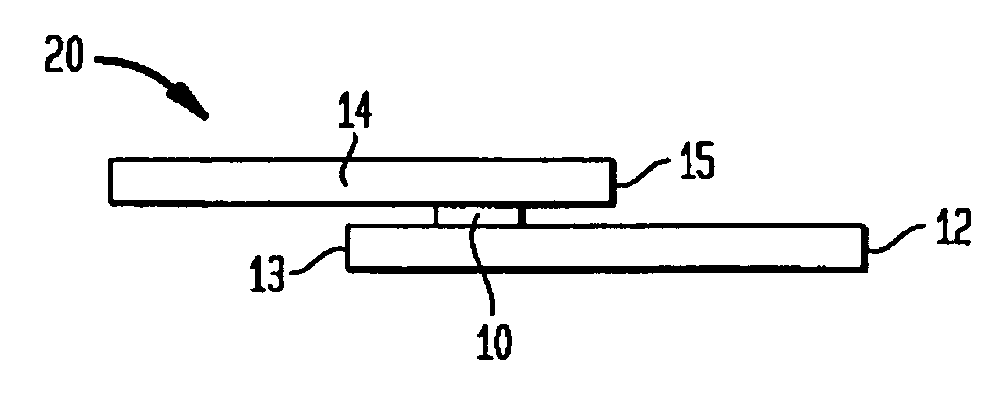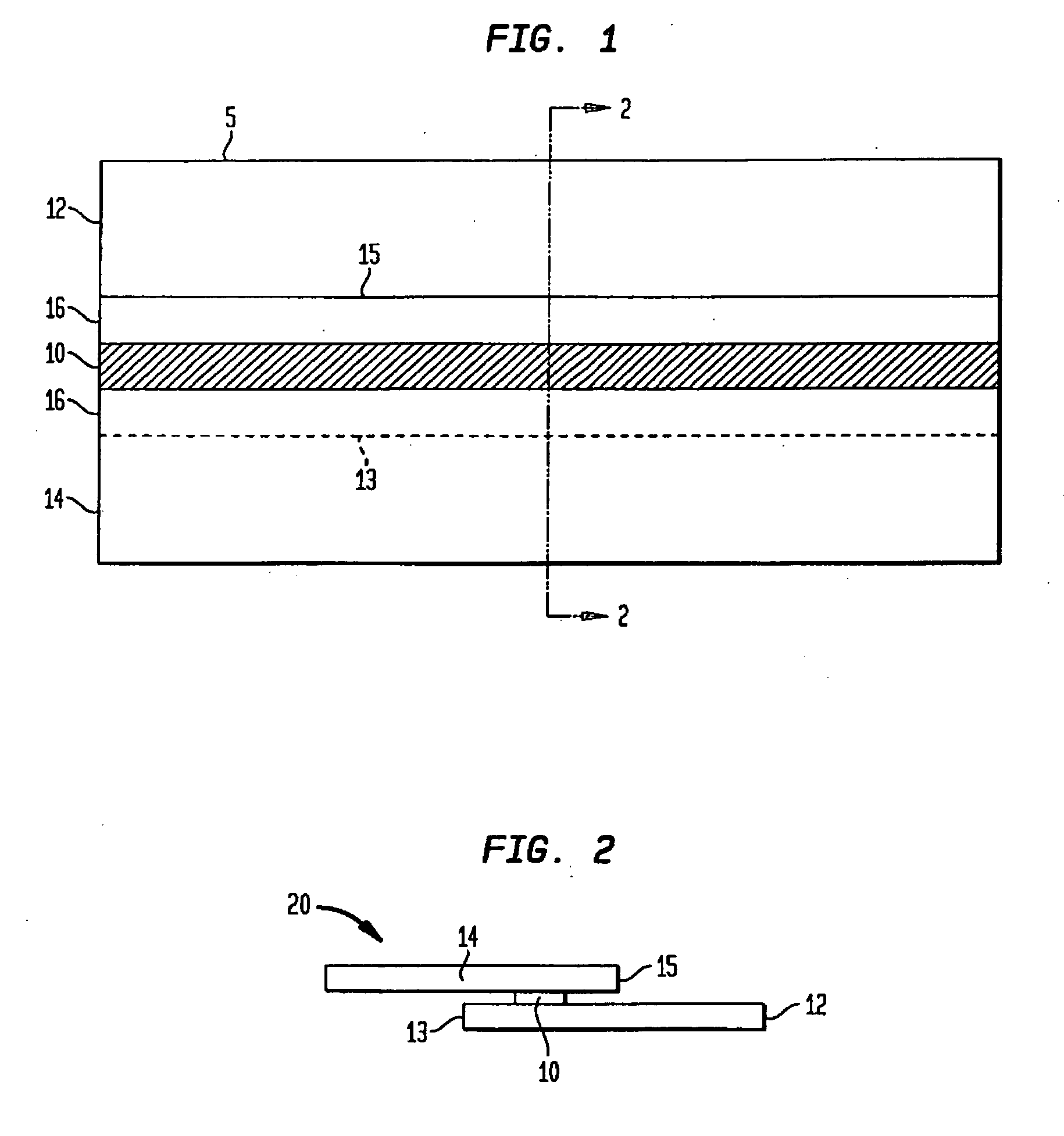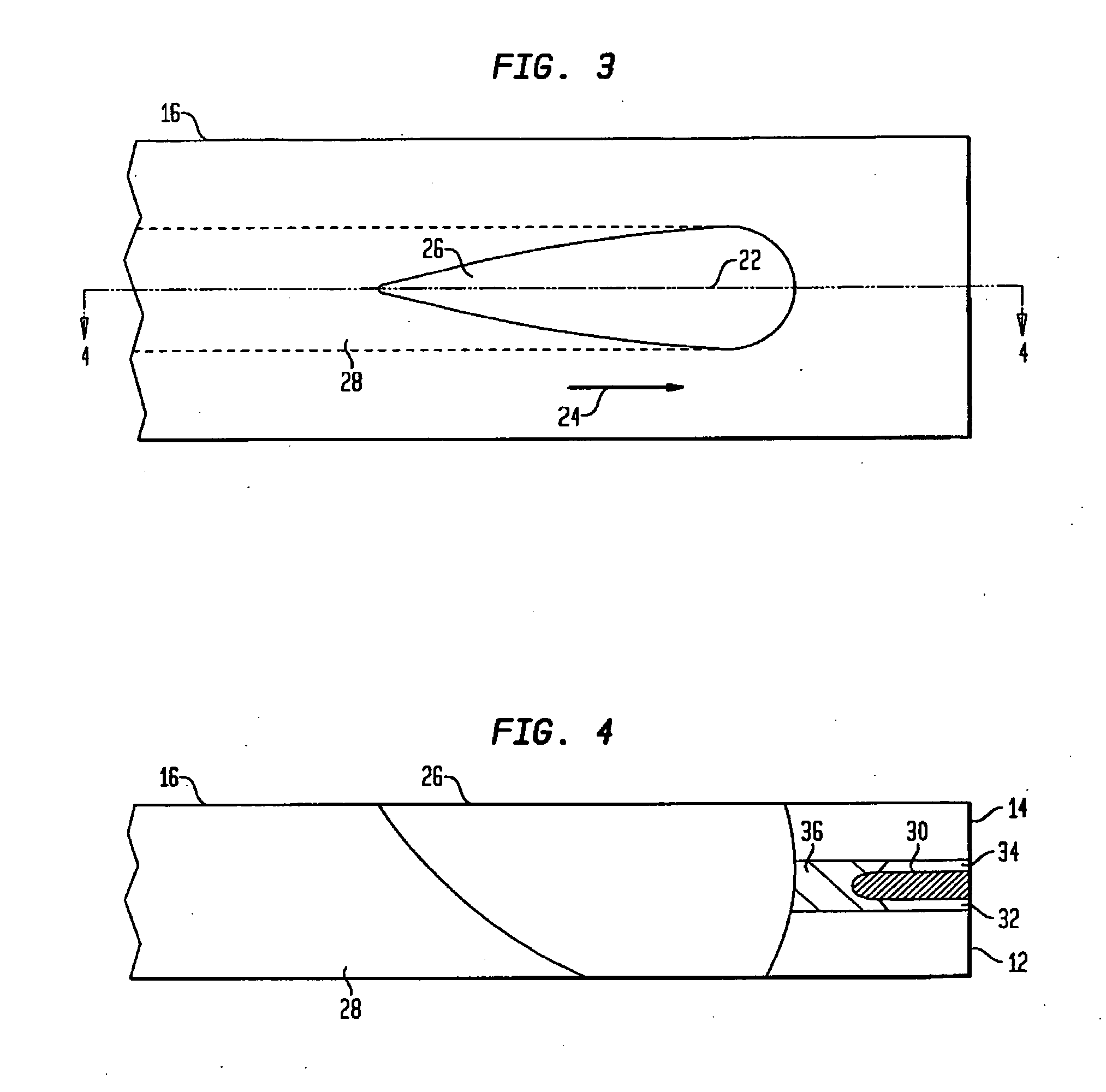Lap welding of steel articles having a corrosion resisting metallic coating
a technology of corrosion-resistant coating and lap welding, which is applied in the direction of welding/soldering/cutting articles, laser beam welding apparatus, manufacturing tools, etc., can solve the problems of zinc vapor bubbles at the faying surface, localized melting of materials in the assembly, and the application of lap welding processes to fabricate products from steel materials with pre-applied corrosion-resistant coatings, such as automobile bodies, can be problematic, and achieve the effect of reducing the risk o
- Summary
- Abstract
- Description
- Claims
- Application Information
AI Technical Summary
Problems solved by technology
Method used
Image
Examples
example 1
[0032]A series of experimental lap welds was made using a 4 kilowatt (kW) diode laser as the heat source. Two zinc coated steel sheets each having a thickness of 1 millimeter were tightly clamped together in a lap joint arrangement with a 0.025 mm thick aluminum foil inserted in the joint. Lap welds were consistently made without any weld pool surface disturbance or steel expulsion. Comparison experiments were performed in which a 0.025 mm thick copper foil was substituted for the aluminum foil, and welding was otherwise conducted under the conditions taught in U.S. Pat. No. 6,479,168. The resulting welds exhibited undesirable cracks.
example 2
[0033]Another series of experimental lap welds was made with the same laser and same grade of steel sheets as in Example 1, but with the sheets previously locally coated by cold spraying of particulate aluminum in the vicinity of the intended welds to an approximate thickness of 100 micrometers. Tightly clamped lap joints were consistently made without process disruption.
example 3
[0034]Further series of lap welds were made with the same steel specification and inserted aluminum foil as in Example 1, but with a 3 kW Nd:YAG laser as the moving heat source, producing similar improvement in welding process stability as found when using a diode laser.
[0035]While the present invention has been disclosed in a presently preferred context, it will be recognized that the present teachings may be adapted to a variety of contexts consistent with this disclosure and the claims that follow. For example, although the welding processes according to the present invention are desirably carried out by placing the steel sheets to be lap joined in a tightly clamped assembly, this tight assembly is not required. Other types of lasers, such as YAG and CO2 lasers, can be used. Heating sources other than lasers can potentially be used. Although the exemplary embodiments have employed steel sheets, such steel sheets do not have to be flat or straight, and the processes according to t...
PUM
| Property | Measurement | Unit |
|---|---|---|
| Percent by mass | aaaaa | aaaaa |
| Percent by mass | aaaaa | aaaaa |
| Weight | aaaaa | aaaaa |
Abstract
Description
Claims
Application Information
 Login to View More
Login to View More - R&D
- Intellectual Property
- Life Sciences
- Materials
- Tech Scout
- Unparalleled Data Quality
- Higher Quality Content
- 60% Fewer Hallucinations
Browse by: Latest US Patents, China's latest patents, Technical Efficacy Thesaurus, Application Domain, Technology Topic, Popular Technical Reports.
© 2025 PatSnap. All rights reserved.Legal|Privacy policy|Modern Slavery Act Transparency Statement|Sitemap|About US| Contact US: help@patsnap.com



